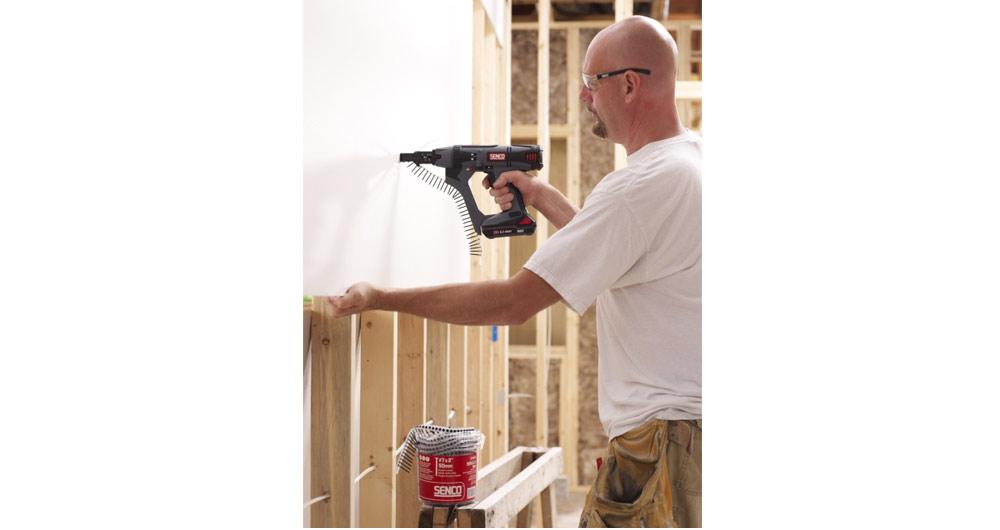Repairing Nail Pops - There's No Joke About This Tricky Project

It might be April Fool's Day, but we aren't joking around with this tricky project. Nail pops occur over time, when a nail begins to separate from the stud it is anchoring drywall to. As the nail begins to work itself out, it eventually applies enough pressure to the spackle or putty above it, to force the putty away from the drywall - exposing the nail's head. Nail pops may be caused by a variety of reasons - from wood beams that swell with humidity to a settling foundation.
An occasional nail pop is nothing to get excited about, but if you notice other problems such as severe cracking, bulges or discoloration in your walls and ceiling - consult a building inspector to have your home evaluated for a more serious issue.
More often than not, a nail pop is caused by the convergence of warm and cold climate(s), which causes wood to swell and contract. They are also more common in older homes, as screws were not a preferred method of drywall fastening 20-30 years ago. Current builders and contractors have the option of using a screw gun, such as Senco's DuraSpin tools, when installing drywall. In the past, nails were typically used for drywall installation. Because a nail has a smooth body, it doesn't command the same holding power that the tracks on a screw do - making it easier to slip out of position.
There are a couple ways to repair a nail pop, depending on the arsenal of tools at your disposal. The simpler solution, take a nail punch to the center of a nail pop, and lightly tap it with a hammer. In the unlikely event that a screw has come loose, simply take a screwdriver and tighten. When using the nail punch, sheetrock and drywall will likely chip away if the nail has not completely protruded through yet, so you will have to use spackle to cover the opening; followed by smoothing, sanding and painting.
For a more permanent solution to the problem, you can also drive a drywall screw into the drywall, along the same stud where the nail has begun to separate. The screw should secure the drywall in place - whereas using a nail punch does not guarantee the issue will not recur if the nail re-separates. Once the screw is in place, scrape any leftover sheetrock or putty away from the original nail gap and spackle over both the nail and screw opening(s). Smooth, sand and paint as necessary.
Nail pops can be a tricky problem for homeowners, but can be easily repaired with the proper attention. If you don't feel comfortable repairing the issue yourself, consult a handyman or professional.
~ The Nail Gun Depot Team


